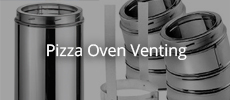Announcement
Collapse
No announcement yet.
Got these firebricks, how should I build a pizza oven with them?
Collapse
X
-
For the sake of online information searchability (!?) I think I found out what the numbers are. I bought some new floor bricks (Also Bjuf SX), and they were stamped "17 05" so I figure its the manufacturing date, year and week number. (The old ones are stamped "86 27")Originally posted by Gulf View PostFizz,
Welcome to the forum! That is an interesting shape for fire brick. A barrel vault seems to be the best choice. From the stamp in the pic I would have guessed that they were an ultrahigh 65% alumina. However, I did a quick search of those markings and found Höganäs Bjuf Refractories. A click on their products, link to a page shows a BJUF.SX (line 4) as a 35% alumina alkali resistant firebrick. So, I'm guessing that the "36.27" stamp is the actual alumina content (much easier to cut with a wet saw than 65%). From reading their page they have been in the business for a long time. You may be able to contact them with some questions. Aside from all that, clean and dry them real good so that the mortar will stick, and have fun .
.
Leave a comment:
-
A few more pics, but minor progress .... Still open for input on buttressing/bracing of the "barrel arches" .. necessary or not?6 Photos
Leave a comment:
-
Bought a few new bricks for the floor and finished the part in the far end of the oven.
Started mocking up the entry arches and the flue ... input, anyone? If I use one curved brick för the flue the cross section will be 100 by 300 mm, that has to be enough, right?6 Photos
Leave a comment:
-
Yes, that should work. Search for barrel ovens on this site. There are a number of builds that detail how they've either buttressed or steel braced their barrel ovens.Originally posted by Fizz View PostComing along nicely .. =)
I decided to make a support in the center of the concrete slab, and using 90 millimeter of leca, and 50 millimeter of calsium silicate board to insulate the under the oven ...
Any input on the necessity of side support for the arch? I´m thinking of insulating the sides with calsil board and then cast a square ring of rebar reinforced concrete around the 10-15 centimeter lower part of the arch ...
Leave a comment:
-
Thanks! I ran out of the ordinary fire bricks, which is why I didn't finish the floor first....Originally posted by UtahBeehiver View PostThose arched bricks are turning out quite nice. Good job on herringbone floor.
More input on the need of buttressing the arch would be much appreciated!
Leave a comment:
-
I hope you're right about that... It feels pretty stiff already, two and a half layer in... I do like to overbuild stuff, but this is kind of expensive and time consuming to do it with...Originally posted by agrasyuk View PostTo me your perfectly cylindrical dome structure looks solid. It will surely support way more then its own weight. Buttressing the lower part of walls not going to hurt, but IMHO reinforced concrete is way overboard.
Unless what you really building is a reinforced plane shelter to protect your RC combat jet from getting preemptively bombed by your neighbor's RC airforce . Then of course you will need all the steel/concrete you can get
Leave a comment:
-
Those arched bricks are turning out quite nice. Good job on herringbone floor.
Leave a comment:
-
To me your perfectly cylindrical dome structure looks solid. It will surely support way more then its own weight. Buttressing the lower part of walls not going to hurt, but IMHO reinforced concrete is way overboard.
Unless what you really building is a reinforced plane shelter to protect your RC combat jet from getting preemptively bombed by your neighbor's RC airforce . Then of course you will need all the steel/concrete you can get
Leave a comment:
-
Coming along nicely .. =)
I decided to make a support in the center of the concrete slab, and using 90 millimeter of leca, and 50 millimeter of calsium silicate board to insulate the under the oven ...
Any input on the necessity of side support for the arch? I´m thinking of insulating the sides with calsil board and then cast a square ring of rebar reinforced concrete around the 10-15 centimeter lower part of the arch ...2 PhotosLast edited by Fizz; 06-21-2017, 03:18 AM.
Leave a comment:
-
Thanks for the reply! My plan was to make it 100 mm thick, and use 10 mm diameter rebar...
I'll sketch up a few of the various designs I've considered and post them here...
Leave a comment:
-
I'm not a structural engineer so no exact calculations for below. But from seeing different builds so far:
I would not go with slab thinner then 3.5" (90mm).
I would span the opening of the "U" with something iron .
i would strongly consider at least some sort of arch to help with the weight in front.
IMHO Wood form should go on the outside of the base so the concrete rests fully on it.
Depending on the size of planned oven you might even want overhanging slab , I would not go more then 6" (150mm) or so of overhang.
Rebar is a m must.
I'm sure you will get more structured replies.
Good luck!
Leave a comment:
-
Started building the base out of leca blocks. No need to cast a slab, as you see ... It´s solid rock...
Next I will build a form and cast a top/slab/hearth (what ever it´s called?) on the base. As you see in the picture, the base is U-shaped, and I wonder how I shoud dimension the concrete top to allow it to be unsupported btw the "sides". It´ll be supported in the back. The distance btw the sides is 80 cm (about 31 inches), and the depth is about 110 cm (app. 43 inches).
How thick should the top be, and do you think its a good idea to build the form like the piece of wood laying on the leca block in the picture? This means that the concrete top won't be supported by the entire surface of the leca block, but the top will use substantially less concrete. The leca block is 19 cm wide ..
Sorry about my bad english, I hope you understand what I mean... =)
1 Photo
Leave a comment:





Leave a comment: